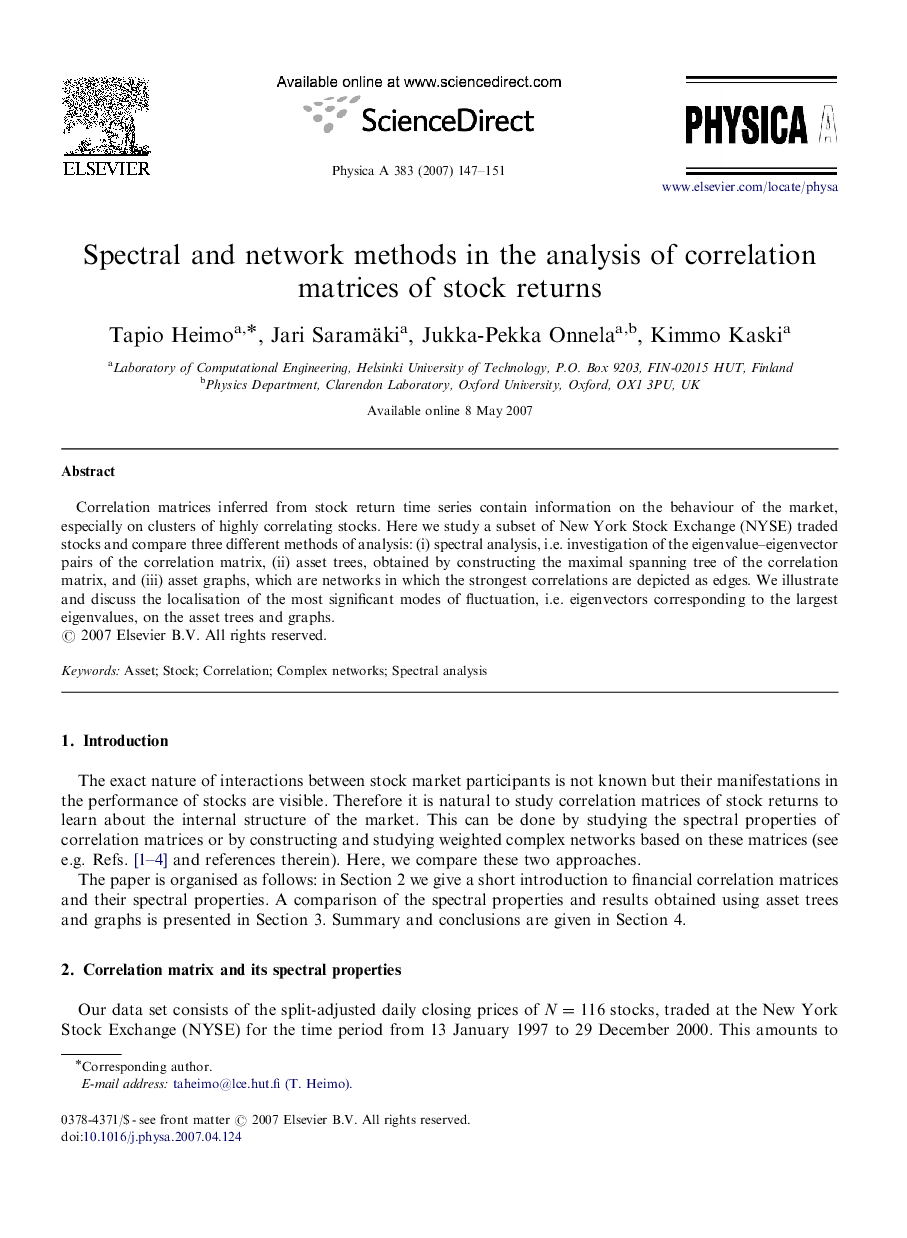| Article ID | Journal | Published Year | Pages | File Type |
|---|---|---|---|---|
| 979561 | Physica A: Statistical Mechanics and its Applications | 2007 | 5 Pages |
Correlation matrices inferred from stock return time series contain information on the behaviour of the market, especially on clusters of highly correlating stocks. Here we study a subset of New York Stock Exchange (NYSE) traded stocks and compare three different methods of analysis: (i) spectral analysis, i.e. investigation of the eigenvalue–eigenvector pairs of the correlation matrix, (ii) asset trees, obtained by constructing the maximal spanning tree of the correlation matrix, and (iii) asset graphs, which are networks in which the strongest correlations are depicted as edges. We illustrate and discuss the localisation of the most significant modes of fluctuation, i.e. eigenvectors corresponding to the largest eigenvalues, on the asset trees and graphs.
